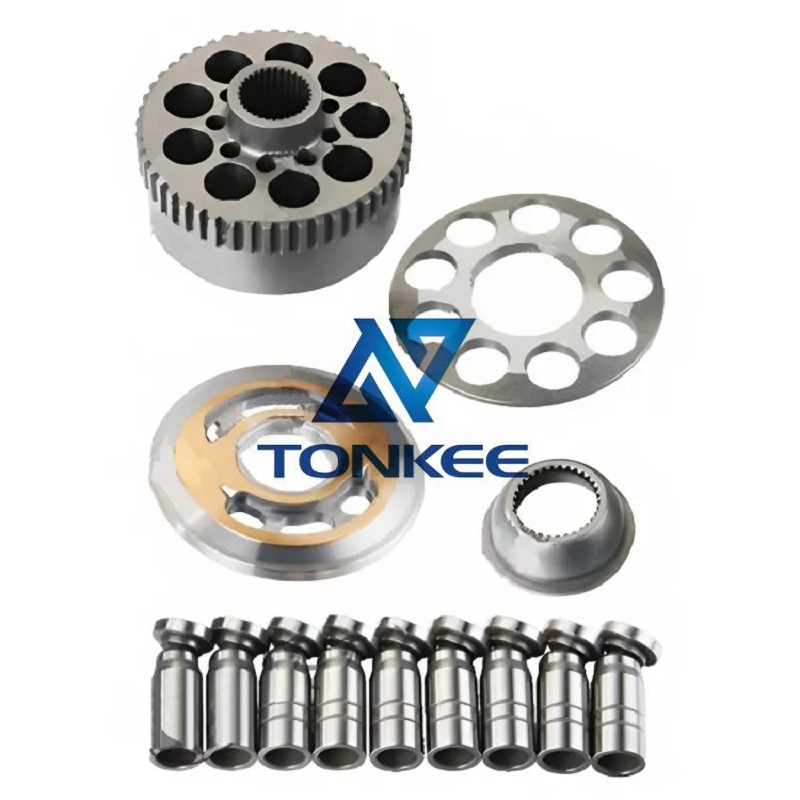
Pump Type: The EX550-3 travel motor hydraulic pump is typically a variable displacement axial piston pump.
This means it can vary the displacement of hydraulic fluid to match the requirements of the hydraulic system, optimizing efficiency.
Displacement Capacity: The pump's displacement capacity is a crucial specification. In the case of the EX550-3, it often falls in the range of 200-300 cc/rev, depending on the specific model and application.
Maximum Pressure: The hydraulic pump is designed to operate at specific pressure levels. In heavy machinery like the EX550-3, the maximum pressure capacity is typically around 350-400 bar (5,000-6,000 psi). This high-pressure rating is necessary for the demanding tasks performed by excavators.
Flow Rate: The flow rate of the pump is measured in liters per minute (LPM) or gallons per minute (GPM). For the EX550-3, the flow rate typically ranges from 150 to 250 LPM, ensuring that there's sufficient hydraulic fluid to power various hydraulic functions simultaneously.
Control Type: The pump may be equipped with various control mechanisms, including manual, electric, or hydraulic controls. These controls allow the operator to regulate the pump's displacement and, consequently, the hydraulic flow, providing precise control over the excavator's movements.
Materials and Durability: The pump components are often constructed from high-strength materials like forged steel or aluminum to withstand the heavy loads and pressures encountered during excavator operations. Additionally, these parts are designed to be highly durable to minimize maintenance and downtime.
Seals and Bearings: High-quality seals and bearings are essential to prevent leaks and ensure smooth pump operation.
These components are often made from materials like polyurethane or nitrile rubber, chosen for their resilience to hydraulic fluids and resistance to wear and tear.
Mounting and Compatibility: The EX550-3 travel motor hydraulic pump is designed to be compatible with the excavator's specific mounting points and hydraulic system. It should be easy to install and integrate seamlessly with the existing equipment.
Efficiency: Efficiency is a critical factor for hydraulic pumps in heavy machinery. The pump should be designed to minimize energy losses, which can result in fuel savings and reduced environmental impact. Advanced designs may incorporate features like load-sensing technology to optimize energy usage.
Maintenance and Serviceability: Easy access to pump components for maintenance and repair is crucial to minimize downtime. Manufacturers often provide service manuals and spare parts to ensure that the pump can be serviced and repaired efficiently.
Safety Features: The hydraulic pump should include safety features like pressure relief valves to prevent overloading and protect the hydraulic system from damage.



 English
English Türkçe
Türkçe


